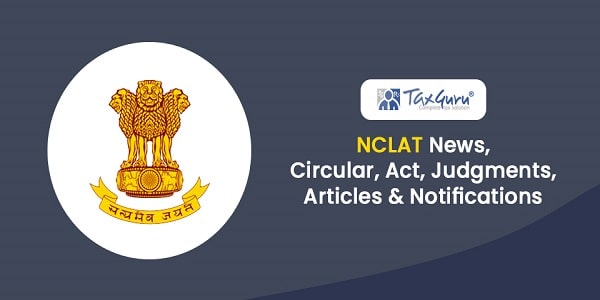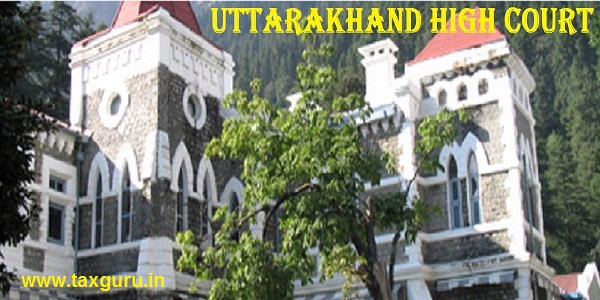The power sector in India has witnessed a major addition in capacity in the last 2 years, making India the fifth largest installed capacity in the world. As of October 2016, the installed power capacity was 307.28 GW. Private capacity generation has increased to 124 GW in FY2015- 16, which constitutes 41% of the total power generated in the country. The Government aims to generate two trillion units (kilowatt hours) of energy by 2019 and is undertaking initiatives aimed at doubling the current production capacity to provide 24×7 electricity for residential, industrial, commercial and agriculture use.
The electricity generation (including renewable energy) in the country grew by 5.9% to 738,027 Million Units (MUs) during FY 2016-17 (April to October) as compared to 696,664 MUs during FY 2015-16 (April to October).
As a result of rationalization of freight charges for domestic coal and reduction of imports, the cost of power to the power utilities has reduced to INR 3.04 per kWh (April to June 2016) from INR 3.19 per kWh (April to June 2015).
The Indian power sector has an investment potential of INR 15 trillion (USD 223.67 billion) in the next 4–5 years and provides immense opportunities in power generation, distribution, transmission and equipment.1
Some of the remarkable achievements in the sector during the last two years are:
- 50471.41 MW generation capacity has been added in the sector since April 2014 (as on October, 2016).
- Increase in electricity generation from 967 BU2 in 2013-14 to 1048 BU in 2014-15 and 1107 BU in 2015-16 resulting in lowest ever energy deficit of 2.1% in FY2015-16.
- 1,28,403 MVA sub-station capacity added during April 2014- March 2016.
- 71% increase in transmission capacity to South India from 3450 MW in FY 2013-14 to 5900 MW.
- 50,215 ckm3 transmission lines laid in April 2014- March 2016 which is 1.5 times higher as compared to April 2012- March 2014.
The Government has also taken initiatives to attract infrastructure development through foreign collaboration. Five power projects are being built in the country with foreign project developers in HP, Odisha, Andhra Pradesh and Maharashtra.
Policy Initiatives & Investments
100% FDI is allowed under automatic route for projects of power generation (except atomic energy), transmission, distribution and trading. Government has also allowed FDI up to 49% under the automatic route in Power Exchanges registered under the Central Electricity Regulatory Commission (Power Market) Regulations.
Fiscal Incentives
Re-financing of Stressed Assets – To address the refinancing options of stressed assets, new guidelines for S4A, 5/25 and SDR have been issued by RBI on November 10, 2016 to recast the debt restructuring schemes and repayment schedules based on asset-liability management risk. Key highlights of the revisions made by RBI are in Annexure I.
FDI Inflow
Total FDI equity inflow in the sector during April 2014 to September 2016 was USD 2.13 billion.
Details of major FDI equity inflow during April 2014 to September 2016 in the sector are provided in Annexure II.
Integrated Power Development Scheme (IPDS)
The Integrated Power Development Scheme, a flagship Scheme of the Ministry, was approved on November 20, 2014 with a total outlay of INR 32,612 crore and is aimed at ensuring 24X7 power for all.
Both Private and State Power Departments will be eligible for financial assistance to strengthen their urban infrastructure including sub-transmission & distribution networks in urban areas and metering of distribution transformers/feeders/consumers. The IT enablement of distribution sector and strengthening of distribution network component has been subsumed under IPDS.
The IT and technical intervention envisaged in the scheme will help in improvement in billing and collection efficiency resulting in reduction in Aggregate Technical and Commercial (AT&C) losses.
Projects worth INR 24,836.55 crore has been sanctioned to bring the benefits of IPDS to 3486 towns.
National LED Programme
Hon’ble Prime Minister of India Shri Narendra Modi, launched the National LED programme on January 5, 2015. It is being implemented by Energy Efficiency Services Limited (EESL), a JV formed of PSUS (NTPC Limited, PFC, REC and POWERGRID) under Ministry of Power. Domestic Efficient Lighting Programme (DELP) and Street Light National Programme (SLNP) have been initiated through which household lighting and street are being replace with LEDs.
EESL has developed an innovative business model in which they invest upfront the entire amount and recover the investment costs from energy savings over a period of time. This eliminates the need for any Government funding or subsidies and the aggregation of demand and bulk procurement has reduced procurement prices of LED bulbs by 88% from INR 310 in February 2014 to INR 38 in August 2016, which is passed on to the consumers.
- Under Domestic Efficient Lighting Programme (DELP), 89 crore LEDs have been distributed in households.4
- Under Street Light National Programme (SLNP), 45 lakh street lights have been replaced in several States.5
Power for All
Government has launched the Deen Dayal Upadhyaya Gram Jyoti Yojana (DDUGJY) in December, 2014 with a goal to provide continuous supply of electricity to rural India.
Under this scheme, adequate infrastructure is being developed to provide access to electricity for all villages through separation of agriculture & non-agriculture feeders, strengthening and augmentation of sub-transmission and distribution infrastructure including metering at distribution transformers, feeders and consumers and rural household electrification.
- Out of 597,464 villages, 590,791 villages (98.8%) have been electrified
- Out of total 4.27 crore connections sanctioned, free electricity connections to 2.5 crore BPL households have been provided as on October 31, 2016.
Infrastructure Development
Thermal Power Projects
During the FY 2016-17, 29 thermal stations having total installed capacity of 13440.5 MW are expected to be commissioned, out of which 9 projects with installed capacity of 3608.5 MW has already been commissioned as on October 31, 2016.
Hydro Electric Power Projects
The hydro power sector in India is already using the latest state of the art technologies which are prevalent worldwide. Some of the recent advances adopted in hydro power generation are greaseless
turbine components, improved generators component, variable speed technologies and adjustable speed pump turbine, improved control and
instrumentation system, improved governor technology, improved insulation resulting in compact generator etc.
Skill Development
The Ministry signed an MoU with Ministry of Skill Development and Entrepreneurship on September 15,2015 fora long term integrated skill development.
NTPC, POWERGRID and REC have signed four MoUs with National Skill Development corporation (NSDC) for Skill Development initiatives. Under various initiatives, 14,662 people have been trained against a target of 43,250 for 2 years and 3456 people have been placed.
A Skill Plan for the Power Sector has also been developed by the Ministry on the basis of a Skill Gap study conducted by the Power Sector Skill Council.
Ease of Doing Business initiatives
Government has undertaken several initiatives under ease of doing business specially to promote hydroelectric power generation.
- To expedite clearance process, hydro projects have been exempted from competitive bidding till August 15, 2022.
- A provision has been made for extension of Power Purchase Agreement for hydro projects beyond 35 years for a further period of 15 years.
- Hydro power has been excluded for estimating Renewable Purchase Obligations. A provision has also been made that the developer shall have the option of indicating, while seeking approval of tariff, long rate of depreciation subject to the upper ceiling determined by Appropriate Commission.
- To promote lending support in sector, two public sector undertakings, namely Power Finance Corporation Limited and Rural Electrification Corporation Limited are providing long term
- In addition, subordinate debt has been provided by Government in a few cases with a low rate of interest for period up to 30 years along with a moratorium period.
Annexure
Annexure I
Key highlights of the ‘Scheme for Stressed Assets’ revisions by RBI
- Streamlining of the process for change of ownership of stressed assets outside of Strategic Debt Restructuring (SDR) process, which allows creditors to convert debt into equity and take over the management of defaulting companies.
- Under its latest loan resolution plan, the scheme for Sustainable Structuring of Stressed Assets (S4A), RBI has allowed banks to classify at least half the debt involved as a standard assets.
- Under S4A, the banks are allowed to split the debt of a stressed company into sustainable and unsustainable halves. While the firm will continue to serve the sustainable half of the debt, the unsustainable half can be converted into long-term equity or equity-like instruments which are held in their investment book.
- Under 5/25 scheme, RBI has increased the coverage to all sectors. It has also allowed smaller projects where banks have at least INR 250 crore exposure to qualify for this scheme.
- Banks are now allowed to classify sustainable half of the stressed debt as standard, even if the case is a non-performing asset (NPA) before invoking the S4A provision. Banks are allowed to write back all the provisions made against the case, if the sustainable part of the debt showed satisfactory performance for a year.
Annexure II
Major FDI equity inflow in the sector during April 2014 to September 20167
| Foreign Collaborator | Country | Indian Company | FDI (USD Million) |
| Sembcorp Utilities Pte Ltd | Singapore | NCC Power Projects Ltd | 346.97 |
| Videocon Mauritius Energy Ltd. | Mauritius | Pipavav Energy Pvt Ltd | 189.85 |
| A S Coal Resources Pte Limited | Singapore | IL&FS Tamil Nadu Power Company Limi | 132.23 |
| GDF Suez Energy International Global Dev | Netherlands | Meenakshi Energy Pvt Ltd | 115.15 |
| Sembcorp Utilities Pte | Singapore | Sembco rp Gayatri Power Ltd | 97.44 |
| Various Investors | U.S.A | Adani Power Limited | 86.41 |
| Isolux Corsan Energy Cyprus Limited | Cyprus | Isolux Corsan Power Concessions India | 67.04 |
| GMR Energy Projects (Mauritius) Lt | Mauritius | GMR Energy Lyd | 67.22 |
| Various Investors | UAE | Adani Transmission Limited | 48.94 |
| Hinduja Energy Ltd | Mauritius | Hinduja National Power Corp Ltd | 44.41 |
| Guayama P.R Holdings B.V | Netherlands | GATI Infrastructure Limited | 40.24 |
| Aisan Development Bank | Philippines | Welspun Renewables Energy Pvt Ltd. | 39.12 |
| Worldwide Emerging Market Holding Ltd. | Mauritius | Adani Power Limited | 23.00 |
| Afro Asia Trade and Investments Ltd. | Mauritius | Adani Power Limited | 23.00 |
Contact Us
Department of Industrial Policy and Promotion,
Ministry of Commerce and Industry,
Udyog Bhawan, Rafi Ahmed Kidwai Marg,
Rajpath Road Area, Central Secretariat,
New Delhi, Delhi 110011
http://www.dipp.nic.in
–
Ministry of Power
Rafi Marg, Sansad Marg Area,
New Delhi, Delhi 110001
www.powermin.nic.in
–
Knowledge Partner : KPMG
Building No. 10, 8th Floor, Tower B & C,
DLF Cyber City, Phase II,
Gurgaon, Haryana 122 002
https://home.kpmg.com/in/en/home.html



























